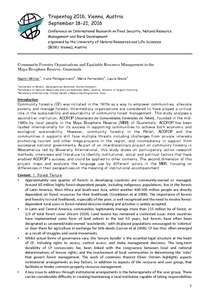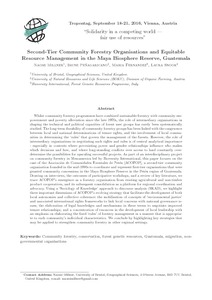Second-tier community forestry organisations and equitable resource management in the Maya Biosphere Reserve, Guatemala
Community forestry (CF) was initiated in the 1970s as a way to empower communities, alleviate poverty and manage forests. Intermediary organisations are considered to have played a critical role in the sustainability and equitability of community forest management. This study analyses a second-tier institution, ACOFOP [Asociación de Comunidades Forestales de Petén], founded in the mid-1990s by local people in the Maya Biosphere Reserve [MBR] of Guatemala. ACOFOP has been



